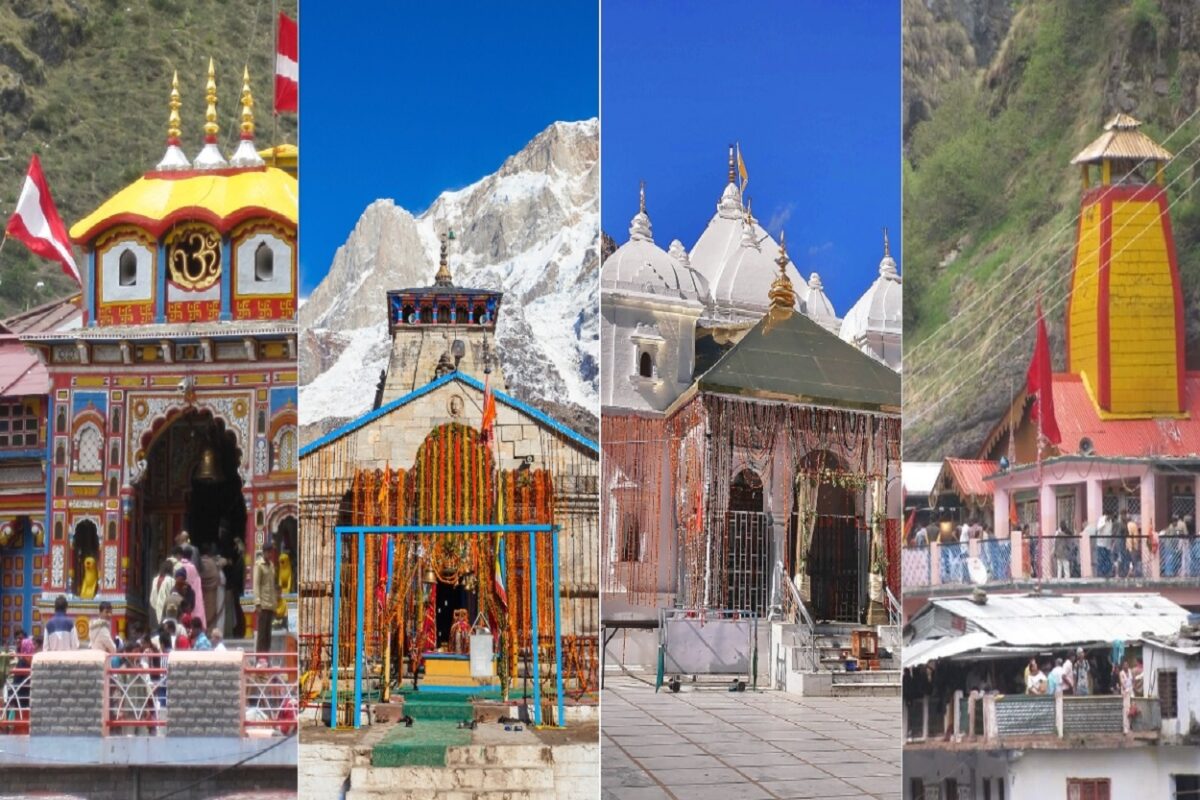
A journey to char dham yatra in the Himalayas by helicopter.
Vedic literature describes a transcendental cluster of holy sites in the Garhwal (Middle) Himalayas that have attracted pilgrims since the beginning of time. The Char-dham, also known as the four holy locations, consists of Badrinath, Kedarnath, Yamunotri, and Gangotri. In this series, we will investigate the sacred Char-dhama and the holy waters that surrounded their manifestation.
Travelling to the Char dham yatra pilgrimage sites will liberate the jivatma from the interminable cycle of birth and death and release the resigned seeker from the accumulation of material life’s impurities. According to the Puranas, every person must undertake this journey at least once in his lifespan. Consequently, both birth and death are viewed as incredibly fortunate.
These holy dhamas are particularly difficult to attain for young children and the elderly. Despite the location being covered in snow for a substantial portion of the year, people of all ages continue to travel there in their quest for union with the Supreme Personality of Godhead.
Gangotri and Yamunotri are shrines that honour the sacred rivers of Mother Bharat, the Ganga and Yamuna, respectively. Holy water flows into the Yamuna at Yamunotri, the Bhagirathi at Gangotri, the Mandakini at Kedarnath, and the Alaknanda at Badrinath. Lord Vishnu’s residence is in Badrinath, while Lord Shiva’s is in Kedarnath.
Yamunotri is the starting point for the char dham yatra journey by helicopter, which proceeds to Gangotri, Kedarnath, and Badrinath. As with the correct Vedic parikrama route, this road travels in a clockwise orientation.
The entire dhama voyage offers breathtaking views of snow-capped mountains, vibrant meadows, verdant surroundings, and cool springs. During the journey, pilgrims have multiple opportunities to bathe in hot and cool springs.
There are additional spiritual sites nearby and all along the char-dhama route. During their journey, pilgrims visit as many holy sites as possible, including Joshimath, Barkot, Uttarkashi, and Guptakashi. Three configurations of holy sites and shrines, the Panch Kedar, Panch Badris, and Panch Prayag, stand out among the many others for their significance.
Pang Kedar
According to sastra, after the Mahabharata war, the Pandavas requested Lord Shiva’s blessings to atone for their crimes. After evading them multiple times, Lord Shiva sought refuge as a bull at Kedarnath. Upon being pursued by the Pandavas, Lord Shiva plunged into the earth, leaving behind his bull’s hump. At Kedernath, its conical protrusion is venerated as the governing deity. In Garhwal, Uttaranchal, there are five Kedar shrines, each representing a distinct aspect of Lord Shiva’s form:
The hump near Kedarnath
The arms of Tunganath (bahu)
The navel is Madamaheshwar (nabhi)
The face of Rudranath (mukh)
The hair of Kalpanath (jata)
Badris Panch
The Panch Badris consist of the primary Badrinath shrine and four adjacent minor badri temples. This region was originally covered in Bhadris, or wild berries, which gave it its name. The Badrinath Deity resides adjacent to the main temple in the Yogadhyan Badri. Bhavishya Badri is the “future badri” When demonic forces dominate the world, the two mountains of Badrinath, Nara and Narayan, will eventually collide and block access to the current Badrinath. Lord Badrinath will subsequently manifest and be worshipped at the Bhavishya Badri temple.
Shankaracharya worshipped Badrinath in Bridha Badri, also referred to as “ancient Badri.” The temple complex at Adi Badri is comprised of sixteen miniature temples with exquisite ornamentation. Shankaracharya is credited with designing seven of these temples, which trace to the late Gupta period. In the primary temple resides a Vishnu Deity made of black stone.
Panch Prayag, the confluence of the four holiest rivers, is regarded as the pinnacle of eternal devotion. Vishnu-prayag, Nand-prayag, Karna-prayag, Rudra-prayag, and Deo-prayag are the five principal prayags. At Deo-prayag, the Bhagirathi from Gaumukh and the Alaknanda from Satopanth converge. Lord Rama and King Dashratha performed penance at this location. Within the Raghunathji temple is a colossal black granite statue of Lord Rama.
Rudra-prayag is located at the confluence of the Alaknanda and Mandakini Rivers, and it carries the name of Lord Shiva. In order to acquire the secrets of music, the sage Narada worshipped Lord Shiva, who came to this location in his Rudra avatar, and asked for his blessing. Sati was reincarnated here after she committed suicide by self-immolation. She performed penance in order to re-ask Shiva for his benediction as a spouse in her new life as the daughter of Himalaya.
The glacial waters of the Pindari Glacier create the Pindari River, whose confluence with the Alaknanda River is known as Karna-prayag. Karna was the name bestowed to the son of Lord Surya and Queen Kunti. Karna also witnessed Ganga and Shiva at this location.
Nand-prayag marks the confluence of the Alaknanda and Mandakini rivers. The confluence was named after the pious Raja Nanda, who performed Maha Yagna at this location. On the monolith that served as the foundation for the Nand temple, the Yagna was performed.
The confluence of the Vishnu Ganaga and the Dhauliganga River forms the Visnu-prayag, also known as the Alaknanda. Here is the Vishnu kund temple, where Narada worshipped Lord Vishnu after incurring the wrath of Brahma and giving birth to him in human form.
Hare Krishna Golden Temple or also known as Swayambhu Sri Lakshmi Narasimha Kshetram, a 1000-year-old temple in Hyderabad and part of the ISKCON Bangalore group of temples, organises wonderful yatras to this punya kshetra. The Akshaya Patra Foundation, HKMCF, Vrindavan Chandrodaya Mandir – the world’s tallest temple in Vrindavan, etc. are among our affiliated organisations.
